Мюнхен HighEnd-2019. Кто лучший?
На мюнхенской выставке HighEnd - 2019 HiFiCompass учредил награды для участников выставки в трех номинациях:
1. Лучшая акустическая система на основе одного динамика
2. Лучшая 2-х полосная акустическая система
3. Лучшая акустическая система с числом полос 3 и более
На этой выставке было немало хороших систем и выбрать лучшие было не так уж и просто, особенно это касалось категории "3+ полосы", так как в ней было наибольшее количество систем. При определении победителя учитывалось как звучание систем, так и их стоимость. Итак, по порядку.
Категория "Best single driver loudspeakers" - Monitor 15HC (Tobian SoundSystems)
 |
 |
На фото Piet de Vries, основатель ресурса audiotweaks.nl, рядом с акустической системой "Monitor 15HC" от Tobian SoundsSystems (Швейцария).
Это была самая немногочисленная категория по числу представленных АС. Если мне не изменяет память, то всего удалось послушать пять систем. Лучшими среди них, на мой взгляд, оказались "Monitor 15HC" швейцарской компании Tobian SoundSystems. Немаленькие АС с объемом около 200 литров, чувствительностью 99 дБ/Вт, построенные на основе коаксиального 15" динамика с оформлением типа "задний рупор". Хотя система и двухполосная, но конструктивно имеет один динамик, поэтому и попала в эту номинацию.
Звучание можно охарактеризовать так - полновесное, очень динамичное, с очень богатым мидбасовым диапазоном, уверенным басом и хорошей звуковой сценой. Верхний диапазон излишне подчеркнут и, если бы его немного приглушить, то баланс был бы оптимальным.
Розничная цена - €27.900 за пару.
Категория "Best 2-way loudspeakers" - Arabesque Minissimo Diamond (Crystal Cable)
На фото Robert Winter - CEO в International Audio Holding, Gabi Rynveld - Sales & Marketing Director в International Audio Holding.
На фоне довольно приличной группы 2-х полосных конкурентов, среди которых были и хорошие напольники типа Falcon Acoustics HP80, эти малыши - CrystalCable Arabesque Minissimo Diamond, в которых мидбас отрабатывает 5" динамик серии Illuminator компании ScanSpeak, а высокие частоты возложены на твитеры с алмазной мембраной от компании SEAS, покорили меня своей безукоризненной звуковой картиной, магической глубиной и прозрачностью, великолепной сбалансированностью, а также тембральной достоверностью. Да, конечно, эти крохи не смогут встряхнуть басом ваше тело, так его там и не может быть при таком размере, но то, что они умеют и делают, заставляет тихо радоваться. Правда, цена такой радости недетская - порядка $20.000 за пару.
Категория "Best 3+ way loudspeakers" - "Menara" (Ulrik Schmidt, Danesian Audio)
I am glad you liked the Menara. It was designed mainly to demonstrate the MD60N-6 dome midrange driver
– and then I also wanted to do the bass compensation (due to the baffle-step) a little bit differently, as in conventional 2½-way speakers (or in this case a 3½-way speaker) with two identical woofers, you often end up with a little too much bass, as you don’t really lose 6 dB below the baffle frequency in an ordinary listening room (that would only be the case in a full anechoic room). Ideally, you would use three identical mid-woofers, each with a nominal impedance of 12 ohm. Two of these would be used as mid-woofers that run all the way up to the tweeter (or in this case the filler driver) and only one woofer would fill in below the baffle frequency – then you would end up with a neutral balance (i.e. flat bass response). Now, we don’t have standard 12 ohm drivers in stock and I wanted to use only standard drivers. Therefore, I used two 4 ohm mid-woofers (MW19PNW-4) connected in series for the upper section – they share a common sealed enclosure (close to Butterworth alignment). The single lower woofer is an 8 ohm driver (MW19PNW-8) that has 3 dB lower sensitivity than the 4 ohm drivers and it sits in its own vented enclosure. Had I been able to use three identical 12 ohm drivers, I would have put them all in a vented enclosure an tuned them exactly the same way (I could have used a vented enclosure for the 4 ohm drivers, of course, but instead I chose to experiment a little with different bass tunings, hoping for more accurate “fast” bass from the upper drivers, though I realized that they wouldn’t go very deep – I took a chance).
The tweeter is our TW29BN-8 (I didn’t need the high sensitivity of the 4 ohm version and besides, the higher driver impedance allows for smaller value capacitors in the filter).
The midrange drivers were handmade prototypes using 3D printed parts (rear chamber and mounting ring/”butterfly”).
We have decided to keep the Menara as a concept design, which is why I am not sharing the cabinet drawings or the crossover schematic. This is a company decision. At some point however, we might decide to make a kit speaker based on parts of this concept (there are no specific plans at the moment, though).
I can describe some details of the crossover (keep in mind that it is a flat vertical baffle with no physical offset of the drivers):
1) The high-pass filter for the tweeter is 3rd order with some attenuation (no L-pad, only series resistors). The tweeter is connected in reverse polarity (normally, in a system like this, you would expect this for the midrange/filler and not for the tweeter).
2) The band-pass filter for the midrange is asymmetrical (lower slope is 12 dB/oct, upper is 6 dB/oct). There is some attenuation and a little EQ/correction just above the upper crossover point. The impedance curve is equalized around the resonance frequency (this was not strictly necessary, but it did improve integration with the upper mid-woofers). Driver polarity is NOT reversed. This midrange driver covers the range from 1-6 kHz (see attached response curves – maybe you also saw this at the show). I have also attached the response curves for the final MD60N-6 prototype driver.
3) The low-pass filter for the upper mid-woofers is 2nd order with impedance equalization at the system resonance frequency (this ensures a nice roll-off without any bump/boost – it makes quite a difference in listening).
4) The low-pass filter for the lower woofer is also 2nd order with impedance equalization of the upper resonance peak of the vented system (as it would otherwise affect the electrical transfer function too much – as described above).
Notice that the two woofer filters are separate branches (as opposed to a cascaded filter, which is often seen in 2½-way speakers).
5) One more thing about the Menara crossover; there is an LCR-network across the input of the crossover (or the output of the amplifier, if you like) to equalize the impedance peak associated with the crossing between the upper mid-woofers and the dome midrange driver, as this would otherwise cause an electrical phase shift slightly above 60°. This is likely not a problem for a modern solid-state amp but still it can cause some colouration and this phase shift is a lot more than what you normally see in the crossover region of e.g. 2-way speakers.
6) The complete Menara has an electrical phase shift within ±15° (the lower impedance peak of the vented system is automatically equalized, as it is paralleled with the upper mid-woofers, whose impedance is quite low here, as it is somewhat below the resonance frequency of the sealed system – that was a nice side-effect of combining the sealad and vented enclosures).
I also forgot to mention the conditions for the Menara frequency response curve. It was measure 20° off-axis in our listening room at a distance of 1.5 meters and the input voltage (rms) was about 0.7 V."
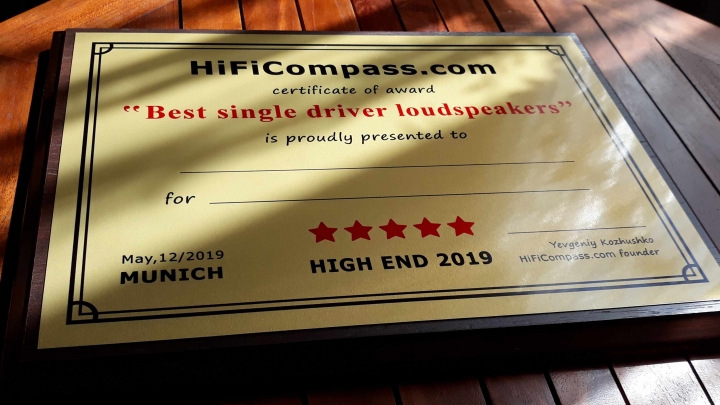























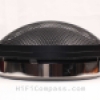
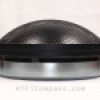
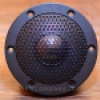
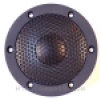
Комментарии (2)